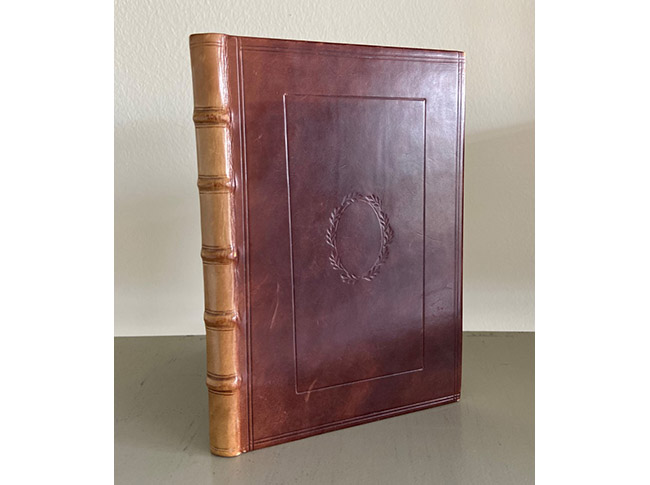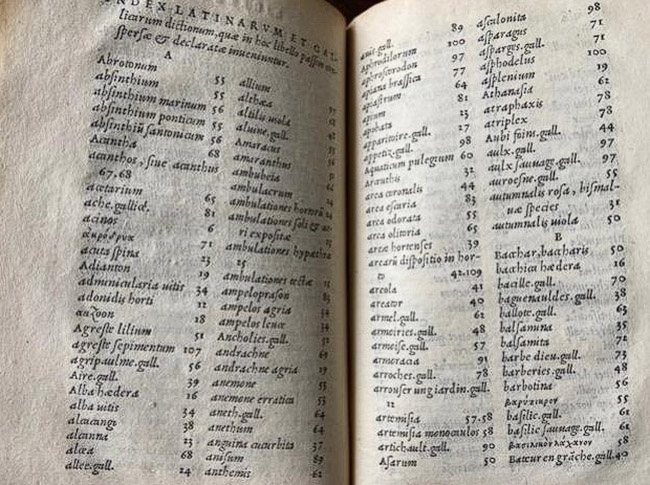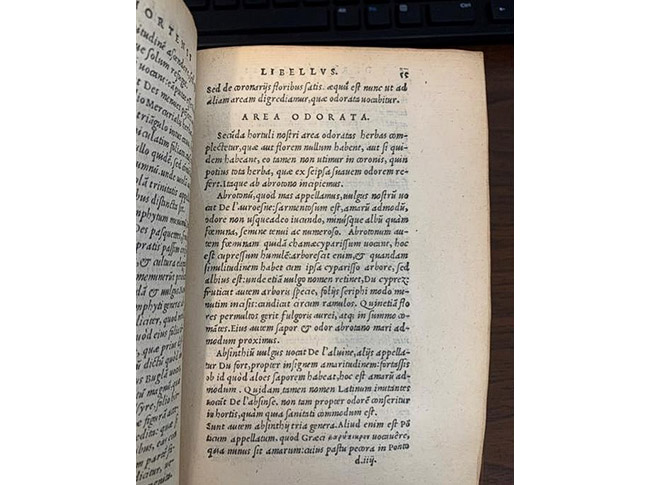The First Children’s Gardening Book—in Latin
Kristine Paulus is the Collection Development Librarian and Emma Hodgson is the Library Associate in the LuEsther T. Mertz Library of The New York Botanical Garden.

Title page with printer’s mark (colophon) of Robert Estienne (Roberti Stephani, Charles’ brother, and includes a woodcut depicting an olive tree and branches and bears the Latin phrase, noli altum sapere, or “do not become proud.”
Today, the book publishing market for children’s literature is a multi-billion-dollar industry and continues to grow. Library circulation statistics also show that materials for young people are equally prevalent. Titles cover an array of subject matter and reflect current interests, so it’s no surprise that plant themed-books are in high demand, especially books about houseplants, gardening, and the environment. This is good news for the LuEsther T. Mertz Library, which recently expanded its juvenile collection, including rare books as well as contemporary titles in the member’s circulating section.
Books for kids weren’t always a prominent genre. Although the origin of children’s literature has been debated, along with the definition of what qualifies as such, books tended to be educational (or “enlightening”) rather than entertaining until the 18th century. While the invention of mechanical printing made books more plentiful, books for any age were still uncommon in the 16th century. However, the Mertz Library recently acquired a 1545 edition of a children’s book, De Re Hortensi Libellus. Originally published in 1535, it is thought to be the first book about gardening for young people. It is written in Latin, the standard language of scientific education at the time, and has no illustrations.
The full title, as it appears on the first page, De re hortensi libellus; vulgaria herborum, florum ac fruticum qui in hortis conseri solent nomina Latinis vocibus efferre docens ex probatis authoribus, in adolesaentulorum gratiam, multò quàm antea locupletior factus translates to “a small book on gardening; teaching the names of the common herbs, flowers and shrubs which are usually planted in gardens in Latin words from approved authors, for the benefit of children.” De Re Hortensi Libellus would have been read mainly by children whose families could afford a sophisticated, multi-lingual, and interdisciplinary education.
The Mertz Library’s copy of the 1545 edition also includes the additional Cui nuper additus est alius libellus De cultu & satione hortorum, ex antiquorum sententia (“to which was lately added another pamphlet, On the Cultivation and Planting of Gardens, from the Opinion of the Ancients”). The author, Charles Estienne (1504–1564), instructs his readers on growing a garden fit for the ancient Roman authors he draws from. With chapters on hedges, borders, walkways, and proper bed arrangements, this is not your typical backyard garden! Although many of the same gardening concerns apply. For example, the chapter “Remedia Adversus Noxias Aeris Tempestates, et Infesta Hortus Animalia” details how best to deal with bad weather and garden pests.
- Published and printed in 1545, this copy has a later antique style calf binding.
- List of plant names
- De Re Hortensi Libellus includes a section on plants for a fragrant garden.
Charles Estienne, a French doctor and anatomist, was born to a family of eminent printers, who, in addition to Charles’s work, produced popular editions of the Bible as well as Latin and Greek dictionaries. Given the magnitude of the Estienne family’s influence and the number of copies that have survived today, De Re Hortensia was widely read and likely inspired many young gardeners.
This remarkable book is one of nearly 300 historical children’s books recently donated by retired teacher, librarian, and book collector, Fern Cohen. Look for future Plant Talk posts for more highlights from this special collection!
SUBSCRIBE
Enter your email address to subscribe to this blog and receive updates on new posts.














